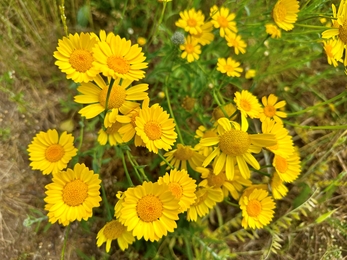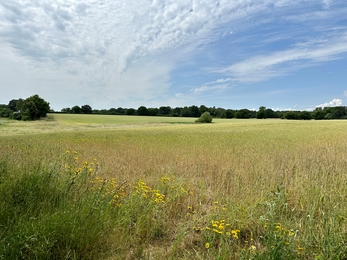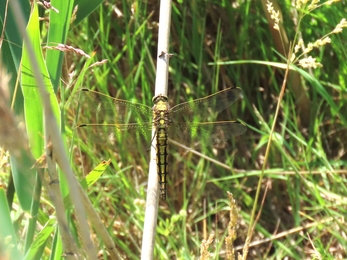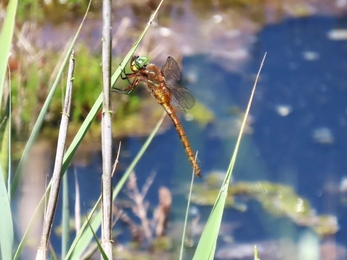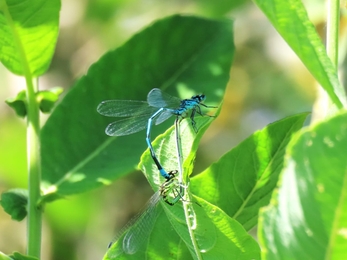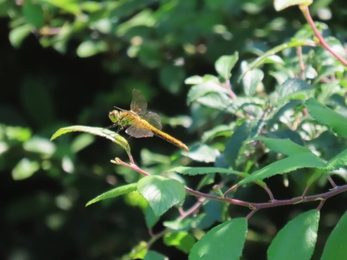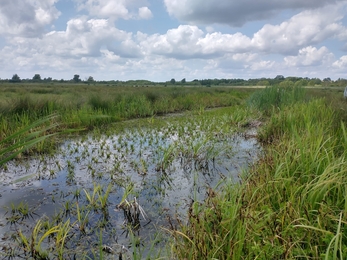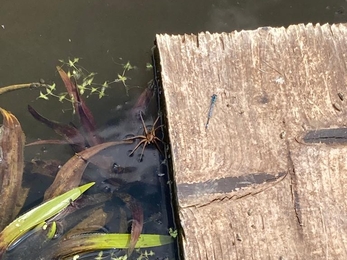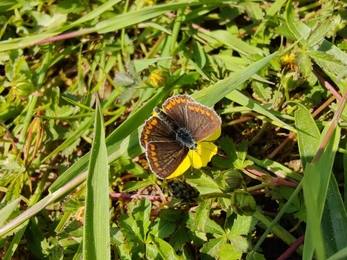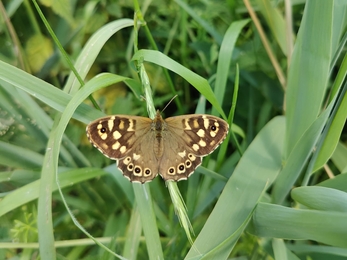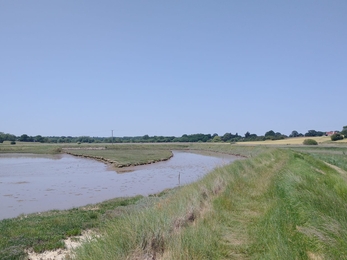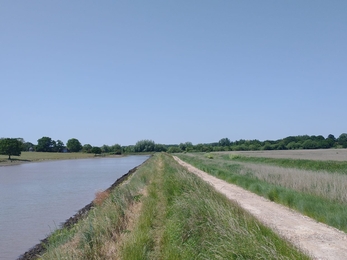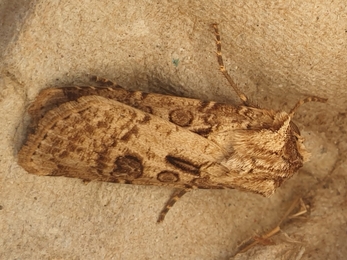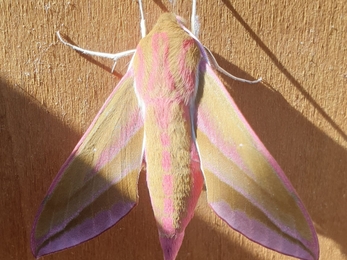Wild news from our reserves – 23 June 2023
Corn marigolds at Martlesham Wilds - Steve Aylward
Lackford Lakes Visitor Officer Michael Andrews caught this wonderful footage of viper’s bugloss waving in the breeze on Church Field at the reserve. Visitors can enjoy this lovely view from the footpath.
Corn marigolds
Corn marigolds are unfortunately now a rare, and declining arable plant. Seed cleaning, liming and herbicides are thought to be responsible for their decline across the UK. These vivid yellow flowers were spotted growing near the car park at Martlesham Wilds, which has been an organic farm, and it's really encouraging to see them thriving here.
Dragons and damsels
Warden Joe Underwood recently spotted a Norfolk hawker dragonfly, breeding azure damselflies, a black-tailed skimmer and a common darter dragonfly at Trimley Marshes. Thank you to Phil Whittaker for sharing these stunning shots.
Fire damage
Warden Lewis Yates has been clearing previously fire-damaged gorse and bracken from heather regeneration plots at Gunton Warren recently. The team waited for the birds to finish breeding in that area before they undertook the work.
The fire occurred last summer, and we are not sure what caused it, but it may have been a disposable barbecue. Luckily, it was put out before it spread too far. Fires and barbecues are strictly prohibited on all our nature reserves, as fires can spread rapidly, killing wild animals and destroying large swathes of habitat.
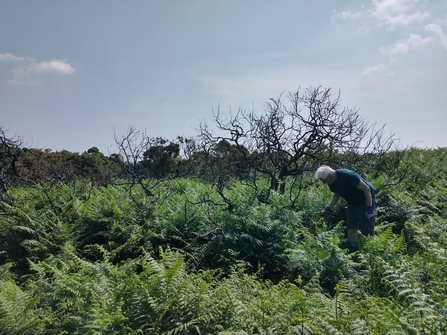
Clearing fire damaged gorse from Gunton Warren – Lewis Yates
Water soldier and fen raft spiders
The ditches at Castle Marshes are stunning at this time of year, being filled with water soldier and, for the eagle-eyed, occasional fen raft spiders, seen hunting on the water’s surface.
Nightjar surveys
South East Reserves Intern Ella Broom recorded this nightjar calling during nightjar surveys in Rendlesham Forest – watch carefully and you can see it fly off at the end.
Life on a leaf
The team at Lackford Lakes observed a hive of activity on a mullein plant this week. Mullein is unsurprisingly the main food of the mullein moth caterpillar, which is the beautifully-coloured caterpillar pictured below. In the second photo you can also see some weevils with a black dot on their back, these are Cionus hortulanus who are busy chasing females, mating and laying eggs. Two male wasps called Symmorphus gracilis were also buzzing around the plant. Symmorphus gracilis hunts the larva of this weevil, but as male wasps do not hunt, it is likely these male wasps were looking for females who would be coming in to hunt the weevil larva.
Raised walkway at Arger Fen
Warden Cormac Adlard and his team replaced the old wooden boardwalk at Arger Fen recently, as it had become rotten and required lots of maintenance work. The new raised walkway is filled with stones, and it is hoped this one will last longer and will not need much repair work.
Minibeasts and flowers at Knettishall Heath
Warden David Stansfeld snapped an array of summer wildflowers and insects at Knettishall Heath recently, with honeysuckle, bee orchid, red cardinal beetle, foxglove, common blue butterfly, bee on tormentil and a speckled wood butterfly.
Hen Reedbeds gets a trim
Warden Dan Doughty and his team have been hard at work maintaining the paths at Hen Reedbeds.
Moths galore
Warden Dan Doughty discovered these beauties when he opened up the moth surveying trap at Church Farm this week.


